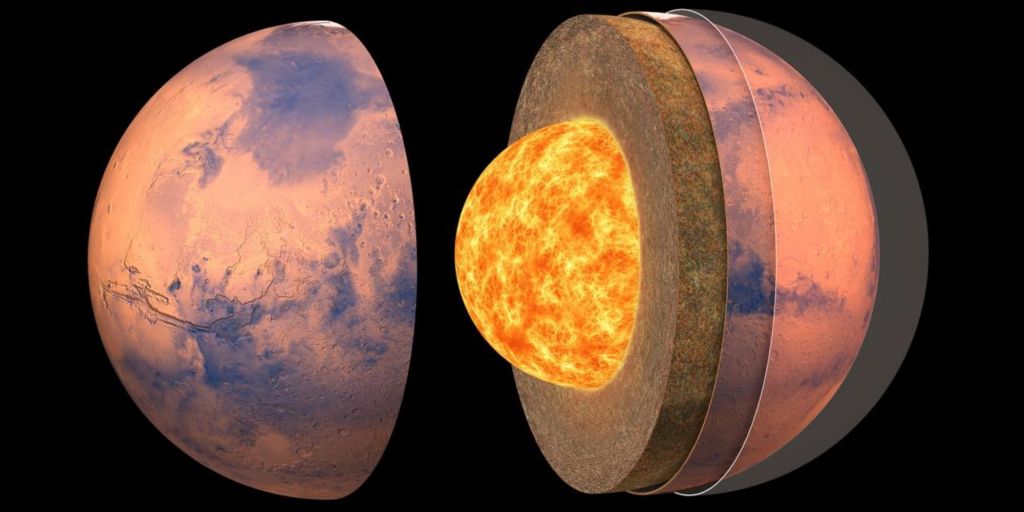For the first time ever, scientists have studied the interior structure of a planet other than Earth by measuring seismic waves on Mars.
Three new studies published in Science on Thursday provide brand new insight into the composition and evolution of Mars. Using seismic data collected by the NASA lander InSight (Interior Exploration using Seismic investigations, Geodesy and Heat Transport), scientists have gleaned more about the planet’s internal structure than ever before.
Videos by VICE
The studies released today use data from the first half of the lander’s time on Mars, as its mission has already been extended until 2022. InSight first landed on Mars in 2018 and started recording marsquakes in February 2019. If you’d like to hear what one of those sounds like, NASA has helpfully uploaded a recording to SoundCloud.
“The cool thing about landing on Mars and doing these observations with a lander, or seismometer, is that a lot of this can be, to some extent, inferred from orbit. But seismology basically gives a lot of ground truth to it,” Simon Stähler told Motherboard. Stähler is a lead author of one of the studies and is a seismologist from the Institute of Geophysics in Switzerland.
The marsquakes were surprisingly small, with magnitudes below 4.0, but occurred an estimated two to ten times a day according to Stähler.
Using observations made from waves bouncing off the boundary of the Martian core, one study determined that the core is 969 miles deep, which is on the bigger side of previous expectations. Its density is quite low compared to Earth’s, estimated to be around 5.7 to 6.3 cubic centimeters, which implies that its iron-nickel alloy must be rich in light elements such as sulfur. The strength of the waves also confirmed that the core is in a liquid state.
The researchers also discovered that Mars has a relatively thin mantle, which shows that it lacks a bridgmanite layer like Earth’s. The lack of this insulating layer could have caused the planet’s core to rapidly cool and create a magnetic field, the researchers write. InSight’s magnetometer measured that the surface’s magnetization is 10 times stronger than orbital data previously showed, implying that Mars’ early magnetic field may have once been as strong as Earth’s is now.
One study measured wave speeds to learn more about the planet’s mantle structure. It found that the wave speed decreased gradually as it went down the mantle, around 400-600 kilometres, which could be caused by the thermal structure of the lithosphere.
Another study led by the University of Cologne’s head of seismological observatory Brigitte Knapmeyer-Endrun concluded that the area where the InSight is located could either have a 20-km-thick two-layer crust or a 39-km-thick three-layer crust. Researchers also studied the historical parameters that could have led to this kind of internal structure.
Seismology was integral to giving these researchers a more concrete understanding of the planet that they wouldn’t have been able to gauge from orbiting satellites.These studies are the first time that seismology has been used to explore another planet’s structure besides the Earth.
Though these have been breakthroughs in our understanding of the planet’s structure and its past, the InSight lander had considerable limitations. InSight is the only seismometer on Mars so its ability to measure seismic waves across the entire planet is severely limited. This makes it difficult to pinpoint the epicentral distance and origins of the waves. Heavy winds and cold temperatures also impact InSight’s ability to measure seismic activity year-round.
“Mars is one planet, where we can kind of calibrate our methods for inferring other planets, and then also using that knowledge to at least try to understand the exoplanet,” Stähler said.




